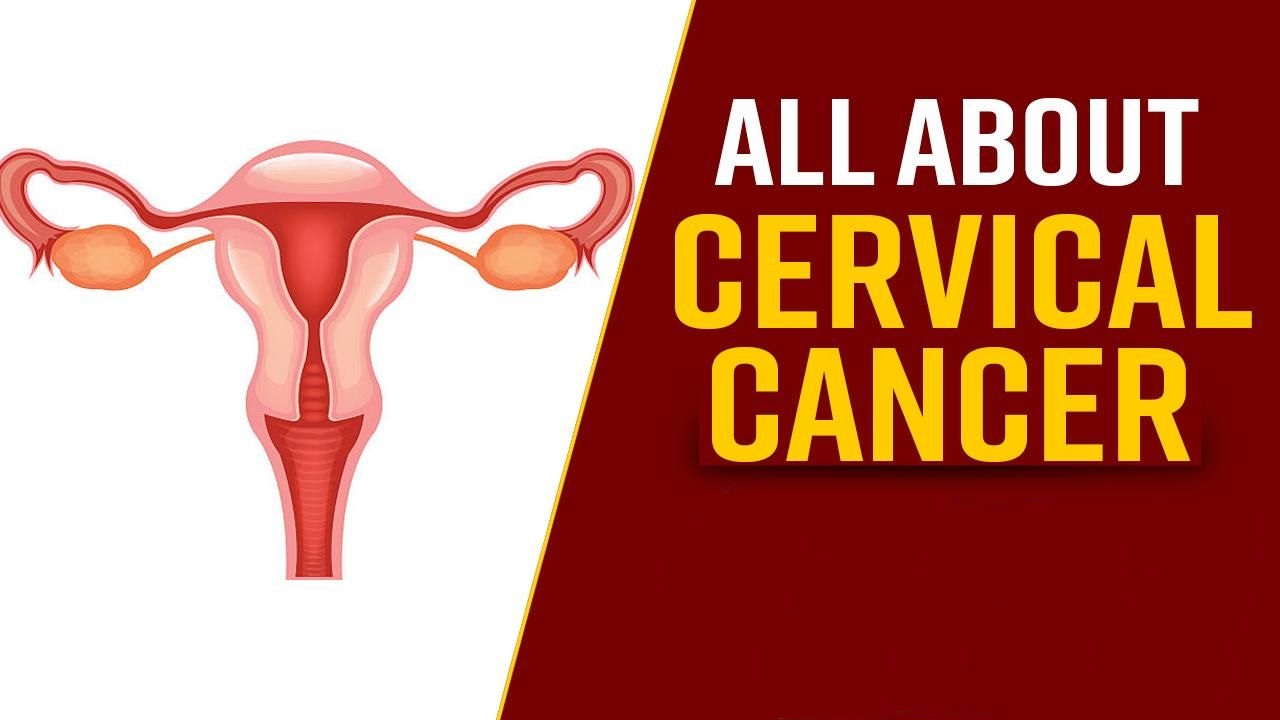


Cervical cancer is a disease in which cells of the cervix change and grow out of control. It is one type of cancer that can affect women. The causes are not known, but risk factors include being over 30 years old, smoking cigarettes, and having several very closely spaced pregnancies. Find out in this article what the symptoms are so that you know if you should see your doctor or go to your local health center.
Cervical cancer is a type of cancer that affects the cells in the cervix, which is the lower part of the uterus. The vast majority of cervical cancers are caused by the human papillomavirus (HPV), a virus that is spread through sexual contact. HPV is very common, and most people who are sexually active will get HPV at some point in their lives. In most cases, the body is able to clear the virus on its own and it does not cause any problems. However, in some cases, HPV can lead to cervical cancer.
Most cervical cancers develop slowly over time. The earliest stage of cervical cancer is known as precancerous changes or dysplasia, which means that there are abnormal changes in the cells of the cervix. Precancerous changes are not yet cancer, but if they are not treated, they can turn into cancer.
If you have precancerous changes or dysplasia, you may not have any symptoms. That’s why it’s important to get regular Pap tests, which can detect these changes early. If precancerous changes are found early, they can be treated before they turn into cancer.
If cervical cancer develops, it may cause symptoms such as:
Cervical cancer typically does not cause any symptoms in its early stages. However, as the cancer grows, it may start to cause symptoms such as:
If you experience any of these symptoms, it's important to see your doctor so they can rule out other potential causes and begin testing for cervical cancer if appropriate.
Despite being one of the most curable cancers, cervical cancer is still the fourth most common cancer-related death in women. In 2018, there will be an estimated 14,000 new cases of cervical cancer diagnosed in India and over 4,000 women will die from the disease. These figures are alarming, but they don't need to be.
Cervical cancer is almost always caused by the human papillomavirus (HPV), a very common virus that is spread through sexual contact. In reality, almost everyone who engages in sexual activity will contract HPV at some point in their lives. However, most people who get HPV never develop cervical cancer because their bodies are able to clear the virus on their own.
There are two main ways to prevent and treat cervical cancer: vaccines and screenings.
Vaccines: The HPV vaccine is available for both girls and boys starting at age 11 or 12. The vaccine is most effective when given before a person becomes sexually active, but it can still be beneficial even if given after sexual activity has begun. There are two types of HPV vaccines currently available in India: Gardasil 9 and Cervarix. Gardasil 9 protects against nine types of HPV, including those that cause most cases of cervical cancer. Cervarix only protects against two types of HPV but may be a better option for people with certain medical conditions.
Screenings: Screenings are tests that look for early signs of cancer. The Pap test (or Pap smear) is the most common screening test for cervical cancer. It involves collecting cells from the cervix and sending them to a lab to be checked for abnormalities. The HPV test is another type of screening test that can be used to look for the virus that causes cervical cancer.
The human papillomavirus is the primary cause of cervical cancer (HPV). There are many strains of HPV, and some can cause cervical cancer while others do not. HPV is spread through sexual contact, so the best way to prevent it is to abstain from sexual activity or to have safe sex (use condoms).
Other risk factors for cervical cancer include:
If you are sexually active, get regular Pap tests. These screenings can detect early signs of cervical cancer, which is highly treatable when caught early.
The cervix is an important part of a woman's reproductive system, and it's vital to be aware of the symptoms of cervical cancer. Early detection is key to successful treatment, so if you experience any of the symptoms listed in this article, be sure to see your doctor right away. With prompt diagnosis and treatment, cervical cancer is highly curable, so don't delay in getting the help you need.
 Allergy Test
Allergy Test
 Anemia Test
Anemia Test
 Auto immune
Auto immune
 Blood disorder
Blood disorder
 Bone and Joint
Bone and Joint
 Cancer Test
Cancer Test
 Cardiology Test
Cardiology Test
 Covid Recovery
Covid Recovery
 Dengue Test
Dengue Test
 Depression
Depression
 Diabetes Test
Diabetes Test
 Fatigue
Fatigue
 Fever Test
Fever Test
 Full body
Full body
 Gastro Test
Gastro Test
 Gastrointestinal
Gastrointestinal
 Gynaecology Test
Gynaecology Test
 Heart Test
Heart Test
 HIV Test
HIV Test
 Hormone Test
Hormone Test
 Hypertension
Hypertension
 Immunity Test
Immunity Test
 Infectious Disease
Infectious Disease
 Infertility Test
Infertility Test
 Influenza Test
Influenza Test
 Iron Test
Iron Test
 Kidney Test
Kidney Test
 Liver Test
Liver Test
 Lung Test
Lung Test
 Nephrology
Nephrology
 Obesity
Obesity
 Orthopedics Test
Orthopedics Test
 Physician
Physician
 Pollution Health Checkup
Pollution Health Checkup
 Pregnancy Test
Pregnancy Test
 Prostate Test
Prostate Test
 Senior Citizen Test
Senior Citizen Test
 STD Test
STD Test
 Thyroid Test
Thyroid Test
 Tuberculosis Test
Tuberculosis Test
 Vitamin Test
Vitamin Test
 Women Health Test
Women Health Test